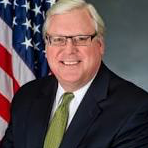
Once again this summer, I am happy to be joining my colleagues in the State Senate, in partnership with the New York State Library – and together with so many local libraries across our region and statewide -- to help promote summer reading.
This year’s theme, “Color Our World,” stresses the lifelong value of reading and pays tribute to the key role libraries and library staff play in our communities. The State Library annually joins New York’s 23 public library systems, 757 public libraries and 311 neighborhood branches to promote summer reading statewide.
Many studies have highlighted the fact that children who read during the summer months make greater academic gains in the following school year than children who do not. The statistics on the “summer slide” jump right off the page, including that:
Students can lose up to 25 percent of their reading level over the summer Children who don’t engage in summer reading lose approximately two months of instructional time, or roughly 22% of the school year By the end of the sixth grade, children who lose reading skills during the summer are, on average, two years behind their peers. While numbers alone help bring the larger story into focus, words themselves often deliver the most impactful testimony of all.
Scholastic’s “Kids & Family Reading Report” has become one of the gold standards of advocacy and research on the importance of summer reading.
Scholastic President and CEO Peter Warwick has stated, “The data is alarming – fewer children today identify as frequent readers and reading frequency plummets as kids age. And yet, there’s beauty in the data as it shows how access to books and a community of reading role models can bolster excitement for reading in a child’s life, which in turn can ignite a greater interest in the skills of reading so that they can explore more stories.”
The bottom line is that summer reading is a lifeline for children at a time when increased research shows that reading can help foster more positive mental health in children and young adults alike.
Consequently, I am grateful this summer to help highlight the efforts of the New York State Library and public libraries statewide, including so many throughout the Southern Tier and Finger Lakes regions.
For my part, I welcome the chance to share the Senate’s online summer reading program. To participate, students and parents can visit my Senate website,www.omara.nysenate.gov, and click on the “Summer Reading Program” icon on the home page.
According to Scholastic, a few of the keys to successful summer reading are letting young readers choose the books they want to read (91% of children say they are more likely to finish a book if they have picked it out themselves), encouraging kids to read four or more books and, most importantly, providing easy access to books.
Libraries are the gateway for making books and other reading materials and programs available throughout our communities. Our region is incredibly fortunate to have an outstanding network of public libraries providing access to books and other reading activities, materials, and opportunities.
Southern Tier and Finger Lakes libraries sponsor a variety of reading activities and events. Visit the website of the Southern Tier Library System, www.stls.org, for links to member libraries in Allegany, Chemung, Schuyler, Steuben, and Yates counties. The members of the Finger Lakes Library System, including Seneca and Tioga counties, are online atwww.fls.org.
There are plenty of ways to help children get summer off to a great start.
Building a reading list is one of the most important and impactful ways of all.
Senator Tom O'Mara represents New York's 58th District which covers all of Chemung, Schuyler, Seneca, Steuben, Tioga and Yates counties, and a portion of Allegany County.
- Read more...
- 0 comments
- 15 views

